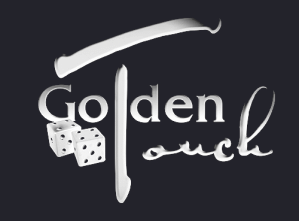
Cap Heeled & Bridged: Terms To Learn Before Heading To The Craps Table

Why the Dont Is Like It Is by Billy the Kid
Since few people play the don't side of the craps table most are unfamiliar with how their bets should be placed.
Most know how the "do" bets are placed but not the "don't". Since "come" and "don't come" bets are handled by the dealer they are of little interest to players however as with all craps bets there are specific places that each players bets should be placed and how each should look to the camera. The key word here is camera but it also is important for the boxman or a dealer returning from a break to be able to tell at a glance what each bet is and who it belongs to.
Lets first speak about the correct terms that the dealers or boxmen will use when describing the placement of bets and then we will describe why these methods are used.. The terms are "cap", "heeled" and "bridged".
When you place the 6 or 8 the dealer will set your bet in your prescribed place and will then set the top part of the bet askew which is the "cap". The cap is used on the 6/8 place bets to assist the dealers in determining how much the pay out will be. When you place the 6/8 for $12 the dealer puts 2 red chips in your spot and then "caps" the bet with 2 white chips that are placed askew. These white chips are the cap, and to pay the bet the dealer will multiply the "cap" by 7 to determine the payoff.7x2=$14. This process should be used with all of the 6/8 bets but some poorly trained or very experienced dealers will sometimes not bother but the rules are in place to help the dealers.
Come bets are also handled by the dealers. They will place your come bet in your spot after the number rolls and then place your odds askew on top of the flat bet to differentiate the difference between the flat portion which is paid 1 to 1 and the odds portion which is paid at true odds. The odds in this case are "heeled" on top of the flat bet. The word "heeled" is used since the bet looks like the heel of a shoe.
Don't pass bets are self service bets as are passline bets and the player is responsible for them. When a player lays odds against a number they will either "heel" their lay or "bridge" the odds portion. If the pay out for the lay bet is equal to the flat don't pass bet the odds should be bridged so that the dealer can size into the flat bet twice to pay the bet correctly. If the payoff for the odds layed are different, either more or less than the flat don't pass bet then the player should "heel the odds off of the bottom chip to signify that this is an odds bet not a flat bet. When your layed odds are "heeled" the odds bet should be next to your don't pass flat bet on the side towards the base dealer. The reason that the odds should be toward the base dealer is because the must pay an odds bet FIRST then pay the flat bet second. You will notice that this is even the way they will pay your pass line and come bets also, odds first, then flat.
Here are some easy amounts that can be bridged as examples. $5 flat don't pass 6 or 8, laying $6 to win 5...$10 flat don't pass 4 or 10 laying $20 to win $10...$10 flay don't pass 5 or 9 laying $15 to win $10. Some examples of odds that should be heeled are, $5 don't pass 6 or 8 laying $18 to win $15...$10 flat don't pass 4 or 10 laying $30 to win $15.
This is probably way more than you ever wanted to know but NOW when you make your bets you can look like a grizzled veteran of the dark side. Grumpy attitude and hat are of course optional.
Billy the Kid


